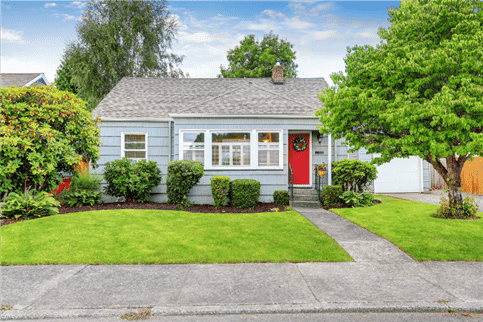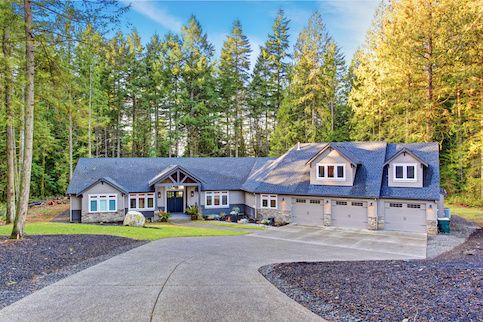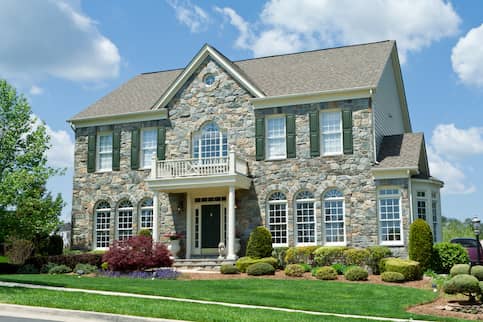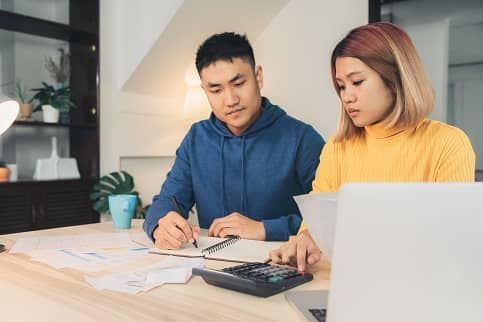Whether it’s a primary residence or an investment property, renovations can add value to a property. They can be especially beneficial if you want to refinance your home to take advantage of equity.
If you’re buying a home that needs work, one valuable estimation method is after-repair value (ARV). Let’s dig deeper into ARV and how homeowners, investors and lenders use it.
What Is After-Repair Value (ARV) In Real Estate?
In real estate, after-repair value (ARV) is the estimated value of a home after renovations. While the “R” in ARV stands for repair, you can factor in any renovations that increase a property’s value.
See What You Qualify For
Buy A Home
Discover mortgage options that fit your unique financial needs.

Refinance
Refinance your mortgage to have more money for what matters.
Tap Into Equity
Use your home’s equity and unlock cash to achieve your goals.
Why Do You Need To Know The ARV As A Homeowner?
Whether you’re buying a new home that can use some TLC or renovating your home, an ARV helps determine a property’s worth after renovations.
ARV helps home buyers and homeowners estimate how much financial benefit they may gain from renovations. Lenders that provide renovation loans rely on an appraiser’s ARV estimate to determine the loan amount for the property based on its after-renovation value. Whether you’re a home buyer, an investor or a lender, getting an accurate value is crucial.
How To Calculate ARV In Real Estate
The formula to calculate ARV is straightforward:
ARV = Property’s Current Value + Value of Renovations and Repairs
Let’s say your home is valued at $250,000. And after repairs, its value increases by $50,000. In this case, your ARV is $250,000 + $50,000, or $300,000.
While the basic ARV formula is straightforward, more accurate calculations require more steps.
1. Consider Comparable Properties
Finding comparable properties is an important first step when determining the value of your property. A comparable property (comp) is a recently sold similar property in your area. Comparing comparable properties to your own can help you estimate the market value for a home in your area with the renovations you’re planning to make.
For example, let’s say you have a three-bedroom ranch. And when you compare it to recently sold three-bedroom ranches, you notice the ones with freshly renovated kitchens sold for $20,000 more. This observation can help you better estimate the ARV and create a realistic budget for your renovations.
If you’re not at a stage where you need an appraisal but need to calculate ARV, you can work with a real estate agent to access comps. Agents can find comparable properties on the multiple listing service (MLS), a repository of all properties in your area.
Real estate agents can use the data to run a comparative market analysis of similar properties to give you a more realistic valuation.
2. Have The Property Appraised
A home appraisal is an essential part of determining the value of a property before and after renovations. An appraiser evaluates every part of the home and land, including but not limited to:
- The size of the home (measured in square feet)
- The amount of land or lot size
- The number of bedrooms and bathrooms
- Curb appeal
- Special amenities (pool, finished basement, attached or detached garage, etc.)
- Overall condition
For the buyer, an appraisal estimates a property’s value before any work is done. Lenders will require an appraisal to determine how much you can borrow to finance your repairs or renovations.
Savvy investors frequently put a cap on the amount they’re willing to spend to purchase a property. ARV helps them determine whether a property is worth their investment by assessing whether they’ll profit from repairs or renovations.
3. Estimate The Value Of Repairs Or Renovations
It’s a good idea to be realistic about the increase in value you’ll gain from renovating. For example, spending $23,000 on a bathroom renovation doesn’t guarantee a $23,000 bump in value when you refinance or sell the house. It’s important to remember that some renovation projects increase home value more than others.
4. Consider How To Finance Your Renovations
If you’re applying for a renovation mortgage, consider its cost, which will likely include closing costs and interest payments.
Lenders rely on the estimated value of a home after repairs to set a maximum loan amount. If you borrow more than the ARV, you’ll risk owing more than the property is worth.
Fund your renovations with a cash-out refinance.
See what you qualify for!
ARV For Investment Properties: How Real Estate Investors Use The 70% Rule
If you want to flip real estate, ARV can help investors evaluate a project’s profit potential. Let’s review one rule real estate investors and house flippers use to protect their bottom line.
In real estate, many investors apply the 70% rule. The rule states that investors shouldn’t spend more than 70% of ARV to purchase a home they want to fix and flip. Here’s the 70% formula:
ARV ✕ 0.7 = Target Purchase Price
Let’s run through a quick example to see how this works. If you’re looking at a house and the estimated value after renovations is $400,000, you shouldn’t spend more than $280,000 to buy the home ($400,000 ✕ 0.7 = $280,000).
The reasoning behind the 70% threshold is that investors know renovations rarely go as planned. It’s reasonable to expect some cost overruns. The 70% rule anticipates delays or unexpected costs, offering a cushion to increase potential profits.
Considerations To Make About ARV
ARV is a useful tool – but it’s not perfect. If you’re using ARV to determine whether a renovation is worthwhile, keep the following points in the back of your mind:
The Real Estate Market Can Change
In real estate, the value of a property is impacted by what’s happening down the street and around the world.
For example, let’s say you plan to renovate a ranch home. You do your research, and it looks like ranch homes are selling. But once you start renovations, colonial houses are suddenly the preferred home style in your neighborhood. If that happens, the ARV for your ranch home may drop.
Or maybe you’re renovating a home in an area where many employers are going fully remote, so home offices are becoming a hot commodity. If you renovate the ranch house to include a ground-floor home office space, your ARV may rise.
Your Home’s Value Can Change During The Renovation Process
ARV can change in the middle of the renovation process, especially if the renovation takes a long time. Today’s market may look like a very different market 6 months or a year from now. Today’s seller’s market can suddenly become tomorrow’s buyer’s market and affect your ARV.
The Cost Of Renovations Can Change
Beyond the renovation’s value, the cost of renovating may change due to building material shortages, higher demand for construction labor, unexpected issues discovered during renovation or problems with a contractor. Changes typically increase costs – and this can impact your ARV.
The Appraiser’s Opinion May Vary
While you may believe the crowning jewel of your renovations is your spa bathtub, your appraiser may disagree that it increases the property’s value.
When there’s a mismatch between what a homeowner or investor believes is a home’s value and the appraiser’s estimate based on the market data, you may end up with a lower-than-expected ARV.
Anticipating market trends is extremely difficult. Appraisers analyze current market realities to arrive at a value – but that’s only part of the appraisal puzzle. While an appraiser must follow specific guidelines, there’s also a value judgment involved. Different appraisers may come back with different valuations for the same property.
Fund your renovations with a cash-out refinance.
See what you qualify for!
The Bottom Line
When securing a renovation loan to purchase or refinance your home, after-repair value takes the current value of your property into account and its value after any planned repairs or renovations. Renovation loans are commonly used for home flipping, but homeowners can also use them to make improvements. While ARV is a useful tool, don’t forget its limits. Go beyond the basic ARV formula to better estimate a property’s value after repairs.
Are you ready to get started on a home renovation? You can get a cash-out refinance or home equity loan to fund your project.

Victoria Araj
Victoria Araj is a Staff Writer for Rocket Companies who has held roles in mortgage banking, public relations and more in her 15-plus years of experience. She has a bachelor’s degree in journalism with an emphasis in political science from Michigan State University, and a master’s degree in public administration from the University of Michigan.








